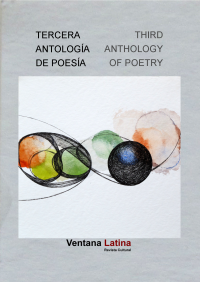Sensemayá, a masterpiece by Mexican musician Silvestre Revueltas
By Eusebio Ruvalcaba*
Translation by Jessica Sequeira
Performer: Symphonic orchestra
Movements: Only one
I
Sensemayá, by Silvestre Revueltas, could well be considered the Mexican musical work par excellence. Nobody resists its charms. Featuring an earthy rhythm, its orchestration is vast and vigorous, even more so than in Redes or Janitzio, the composer’s other two orchestral masterworks.
Revueltas was a tormented genius and prospector of musical tradition, never satisfied with his compositions and always looking to improve. By his side other Mexican composers pale, even those extolled by political power like Carlos Chávez, without doubt a great promoter of music in Mexico and a learned director. Revueltas’s work remains an echo chamber whose reverberation will travel far before it gives out, despite the attempts that have been made to extinguish it. These attempts have not been made in vain, as until recently Revueltas’s name didn’t exist in the official history of music in Mexico, though it was cited with reverence in musical circles.
Though a militant of the left, Revueltas maintained the independence of his music. With him the surprises are endless. As his musical works gain an audience, from symphonic poems to chamber music –it’s not possible to listen to Homenaje a García Lorca without tears flooding one’s eyes– his figure will continue to grow, inversely to how the figures of others diminish. He is a giant of universal music, with a constantly evolving work unimpacted by his tragic biography. (There would be no reason to hide the details of his life; alcoholism is part of the existence of Silvestre Revueltas, just like his sense of humour and his unsparing irony.)
Anecdotes about Revueltas abound. Blas Galindo, a composer from Jalisco, once told me the following story. On a certain occasion, when Revueltas was director of the old Conservatorio Nacional de Música, they found themselves chatting when suddenly a girl came up, crying bitterly. She approached and said: ‘Master, I want to ask you for a loan. My mother has just died and I don’t have five pesos to bury her. I will find a way to repay you’, to which Revueltas responded: ‘I am very sorry, but this is not a charity. With effort there’s hardly enough money to pay teachers, not to speak of making loans’. The young girl turned around and started to walk on, without ceasing her crying, but at that moment Revueltas called her back with the classic ‘psss, psss’. The girl returned and Revueltas pulled out from his jacket his envelope of fortnightly pay: ‘The Conservatory doesn’t have money to loan you’ —he said—, ‘but I do. Take it’, and he held out the envelope to her.
What will remain of Revueltas, however, is his music. The influence of Sensemayá is still felt today, nearly 80 years after its composition, even making its way into the recent North American film Sin City. In one of the most gripping sequences, when in the third story good is on the point of rescuing the girl and finishing off evil, in the context of a plot with lots of action and skilled deployment of cameras, suddenly one hears Sensemayá. The sound of it gives chills to the viewer in his seat; as the music of Revueltas fills the hall, he asks himself where on earth this eerie music came from, which can raise goosebumps besides lending the sequence additional drama. Familiar with the composer, I decided to wait for the thrill of seeing the name of Silvestre Revueltas and his immortal Sensemayá in the credits. And there they were.
The musical phrases of this great composer from Durango are solid, indestructible constructions. As would be expected given the magnetism of his personality and picturesque spirit, the music of such an enigmatic genius is complex, saturated with allegories expressing the heartache of Mexico without ever falling into the chauvinistic complications to which the myopic of spirit are given. The music of Silvestre Revueltas has substance to it, and its true warp is tenderness.
I mentioned Revueltas’s musical phrases, but one should also mention the phrases that he wrote. Like this one: ‘When I was a boy, my father would impose corporal punishments on me and shut me up in a dark room, nearly always for some futile motive. After a short while I would be brought a plate of fruits and let out. When I saw my father afterwards, I always felt an infinite sadness and compassion for him; but I have never pardoned him.’ As if he spoke with the voice of Mexico, his timbre is tragic.
II
Mexico is music. Mexico is Silvestre Revueltas. Mexico is happiness and pain turned into music. But not that nationalistic music that reverberates in the ears like the most vulgar of sounds. Not that sort of indigenous folklorism that distances us more than brings us closer to the genuine Mexican spirit. Mexico is colour that ignites the soul, as the music of Silvestre Revueltas is to our ears. His music originates from the announcements of the street, from the machines of tortilla factories, from the scrapes of the knife sharpeners. These sounds are all to be found, transformed, in that work of Revueltas, Sensemayá. Sharp rhythms, whirls of greens, torch like yellows, overwhelming blues, molten reds, unusual violets.
Sensemayá.
This is the musical X-ray of Mexico. All of Mexico is there: the waterfalls and deserts, the clear skies and shadowy firmament, the harsh sun and brightly-lit, luminous night. The grubby children and overprotective mothers, the reeking drunks and cheesy fifteenth birthday parties. The females and machos, the days and hours, the minutes and years.
All Mexico is in that symphonic poem of six minutes. Revueltas didn’t need more than that. What purpose would a symphony serve, or an opera? Why write an orchestral novela, if everything can be resolved in a symphonic poem, a work that devastates and reconstructs everything in its path, demolishing what our brain considers good musical custom and creating new customs in its place. Sensemayá: a savage shudder, an earthquake. A unpredictable terrestrial movement. A phenomenon that can’t leave whoever hears it unmoved.
Sensemayá is great music, and not everyone accepts it. Ever since it came into the world, discordant voices haven’t been lacking. The envious have yelled protests, made the sign of the cross, and imposed hindrances everywhere, as if a masterwork could be silenced in that way, needing permission to breathe. Their distractions have succeeded in dissuading some people from ever listening, but with time opinions have changed, and today the name of Revueltas is gaining new appreciation.
Perhaps the most curious characteristic of Sensemayá is that while all agree that it breaks new ground, listeners seem to experience it in completely different ways. There are those who consider it a daughter of Stravinsky, and there are those who search for its origins in the craggy hillsides of the mountains of Oaxaca. But none of that is right: its true origin is in the heart of the ordinary Mexican, the Mexican of the street and the plough, the university classroom and the factory. It’s enough to listen to the music of Sensemayá only once for it to embed itself thoroughly in one’s mind, becoming a part of the listener – something that can be said of very few works.
* Eusebio Ruvalcaba (Guadalajara, 1951) is a novelist, essayist and poet. His website is www.eusebioruvalcaba.wordpress.com.







 Copyright © 2024 Company no. 6720498 10 Kingsgate Place, London NW6 4TA, United Kingdom Tel: 020 7372 8653
Copyright © 2024 Company no. 6720498 10 Kingsgate Place, London NW6 4TA, United Kingdom Tel: 020 7372 8653